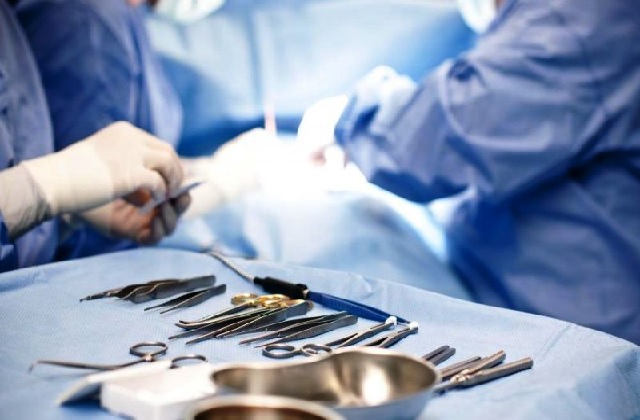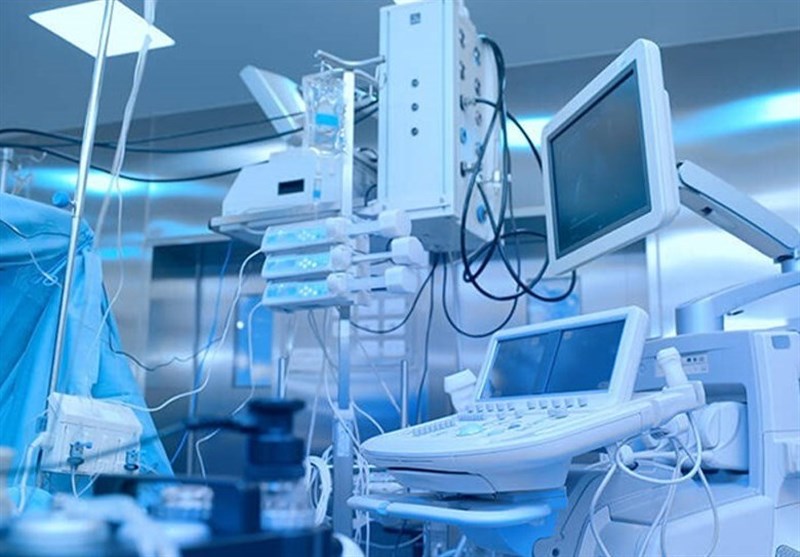The medical device manufacturing industry covers implants, instruments and equipment intended for treatment, monitoring and diagnosis, medical device manufacturing.
Production of medical equipment in the industry
The medical device manufacturing industry covers implants, instruments and equipment intended for treatment, monitoring and diagnosis. These include reconstructive devices such as hip and knee replacements, as well as implantable monitors for heart and diabetes care.

Medical equipment production departments of the industry
- Orthopedics: This sector has been one of the fastest growing sectors in the production of medical equipment. This includes reconstructive devices, spinal implants, arthroscopy, orthobiologics, hip implants, and knee replacements. This sector uses manufacturing processes such as machining, casting, grinding, polishing, metal injection molding, and rapid manufacturing.
- Surgical Instruments and Technologies: One of the largest segments includes dilators, sutures, and surgical robotics. Key technologies include micromachining, surface treatment and materials.
- Diagnostic devices: endoscopic devices, ultrasound and magnetic resonance devices are examples of this section. Key technologies include imaging, information technology, and micromanufacturing.
- Cardiovascular Devices: This highly competitive segment includes pacemakers, defibrillators and drug-eluting stents. Key technologies include energy sources, micromolding and assembly.
- Diabetes Devices: Continuous Glucose Monitoring (CGM) is the leading example in this segment. Key technologies include nanotechnology, sensors and assembly.
- Dental equipment manufacturing tools and technologies: imaging equipment, implants, drills and tools Key technologies include machining, additive manufacturing and 3D imaging.
Other parts Spine devices, catheters, hypodermic syringes and needles, blood transfusion and IV equipment, internal fixation devices, neuromodulation devices and urology devices.
Technologies and processes
- 3D Imaging: 3D data capture refers to both the tools and the process of collecting 3D digital data from physical objects. It is a process that combines hardware and software. As the ability to create custom and additive devices increases, use in medical manufacturing is increasing.
- Quality Systems: In a highly regulated environment with a critical need for consistent quality, quality systems such as FMEA are key to medical device manufacturing.
- Measurement and Inspection: Maintaining quality requires consistent, reliable and verifiable measurement and inspection. Manufacturing medical devices down to the micron and sub-micron levels can present unique technological and process challenges.
- Additive Manufacturing/3D Printing: Combined with 3D imaging technologies, additive manufacturing enables customization by reducing design and development time. Surgical guides (separating conjoined twins) and prosthetics are two of the most common areas where this technology is used.
- Assembly: From selecting appropriate bonding methods to meet biocompatibility requirements to handling micron components, the assembly of medical device manufacturing must often be performed in cleanroom environments.
- Laser: Highly precise and flexible, a narrow laser beam can cut, machine mark or weld intricate details with micron accuracy.
- Coatings and surface treatments: Coatings perform several functions such as increasing wear resistance, increasing bone growth, reducing friction, and increasing wear. Biocompatible coatings are used for passive and drug-eluting applications on cardiovascular stents and a wide range of other implantable medical devices. The ultra-thin coating formulation on implantable devices is designed to protect surrounding tissue from potential harmful interactions with bare metal stents.
- Machining: From components to other devices, many require machining of medical grade materials. This includes the unique machining challenges to the extreme precision of titanium.
- Materials: In addition to all the usual requirements for materials, biocompatibility is a unique challenge for selecting materials for the manufacture of medical devices.
- Micro-manufacturing: Devices keep getting smaller and smaller for many reasons. Features and components of only a few microns require specialized microfabrication processes, including micromachining and micromolding.
- Nanotechnology: From new materials and coatings to drug delivery systems, the use of nanotechnology in medical and medical devices is expected to grow.
- Energy sources: With the development of implantable devices for monitoring and treatment, the selection and development of energy sources has become an important part of medical production.

Production of medical equipment:
Polymers are large molecules produced from proteins and cellulose that have many applications in most industries such as aerospace, medical equipment, household goods, etc. The polymer is divided into different types (flexible and hard) depending on the degree of heat it sees. They are made from monomers obtained from petrochemical materials such as ethylene, ethylene acid, caprolactam, etc.
One of their important types are medical polymers. In recent years, it has been tried to make a degradable type that has the least side effects for the patient. One of the most important reasons for using polymers in the production of medical equipment is its high flexibility, which can be used to produce a wide range of products.
Advantages of using polymer and composite in the production of medical equipment:
Production of cheap medical equipment
With the use of polymers, it is possible to produce disposable and cheap items such as syringes and surgical gloves. The use of disposable supplies causes. The infection in various surgeries will be significantly reduced, which will reduce the infection in various surgeries.
Increased safety
The flexible and soft material of polymers increases the safety of medical equipment.
Easier to use
Due to the lightness of polymers, they are easier to transport than metal or glass appliances.
Reducing allergic sensitivities
Some people may be allergic to metals used in medical equipment, this problem can be solved by replacing hypoallergenic plastics.
Diversity in the production of medical equipment
Due to the high formability of polymers, all kinds of accessories can be produced by molding according to the customer’s order.
Selection criteria for medical materials and equipment and composites:
- Physical properties: When it comes to medical equipment, it should be noted that the physical properties of the desired polymer provide the desired characteristics of the device or not? When making these devices, it should be noted that the physical properties of the desired polymer provide the desired characteristics of the device or not?
- Chemical properties: In the production of medical equipment such as implants, which are in close contact with the patient, paying attention to the compatibility of the chemical properties of the used polymer with the human body is essential.
- Costs: In disposable medical equipment, it is important to pay attention to the price of consumables.
Some uses of polymers
Vinyl chlorides are used in the production of medical equipment, tubes and sterile disposable devices and blood bags.
- Polypropylene: It is used in the production of suture materials, surgical trays, medical bags and other polypropylenes.
- Polyethylene: High molecular weight polyethylene is used in the production of knee and thigh replacement parts. High-density polyethylene is used to make the inner cover of catheters and grafts to strengthen the contour of the skull. Low density polyethylene is also used in packaging.
- Polystyrene: Polystyrene is used in making trays.
- Thermoplastic elastomers: It is used in the manufacture of tubes, catheters, drug washing stents, surgical instruments, and other than thermoplastic elastomers.
- Bioabsorbable materials: Bone screws, sutures, vascular stents are made of bioabsorbable materials such as lactic acid, glycolic acid and related copolymers.
سوالات متداول
با توجه به پیشرفت علم تنوع تولید تجهیزات پزشکی بسیار زیاد است که با توجه به تجربه کاری در زمینه تولید، شما میتوانید با راهنمایی های شرکت محصولات با کیفیتی را تولید نمایید.
یکی از پرفروش ترین محصولات بازار، محصولات یک بار مصرف است که خوشبختانه بیشترین تجهیزات پزشکی یک بار مصرفی اند.
با توجه به گسترش تبلیغات در شبکه های اجتماعی و سایت ها و همچنین تجربه کاری شرکت، مشاورات شما را برای خرید مواد اولیه و با کیفیت راهنمایی می کنند.

